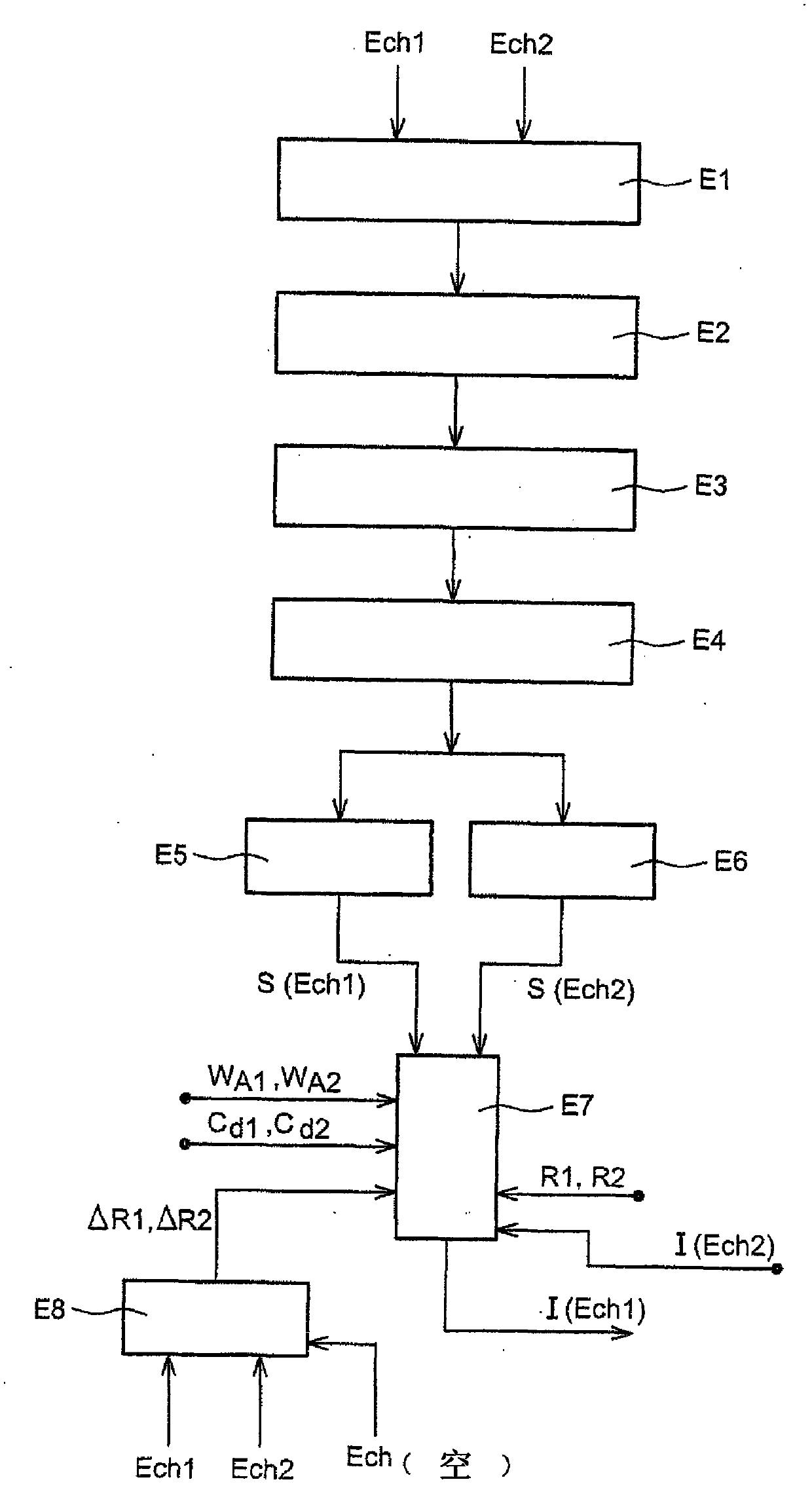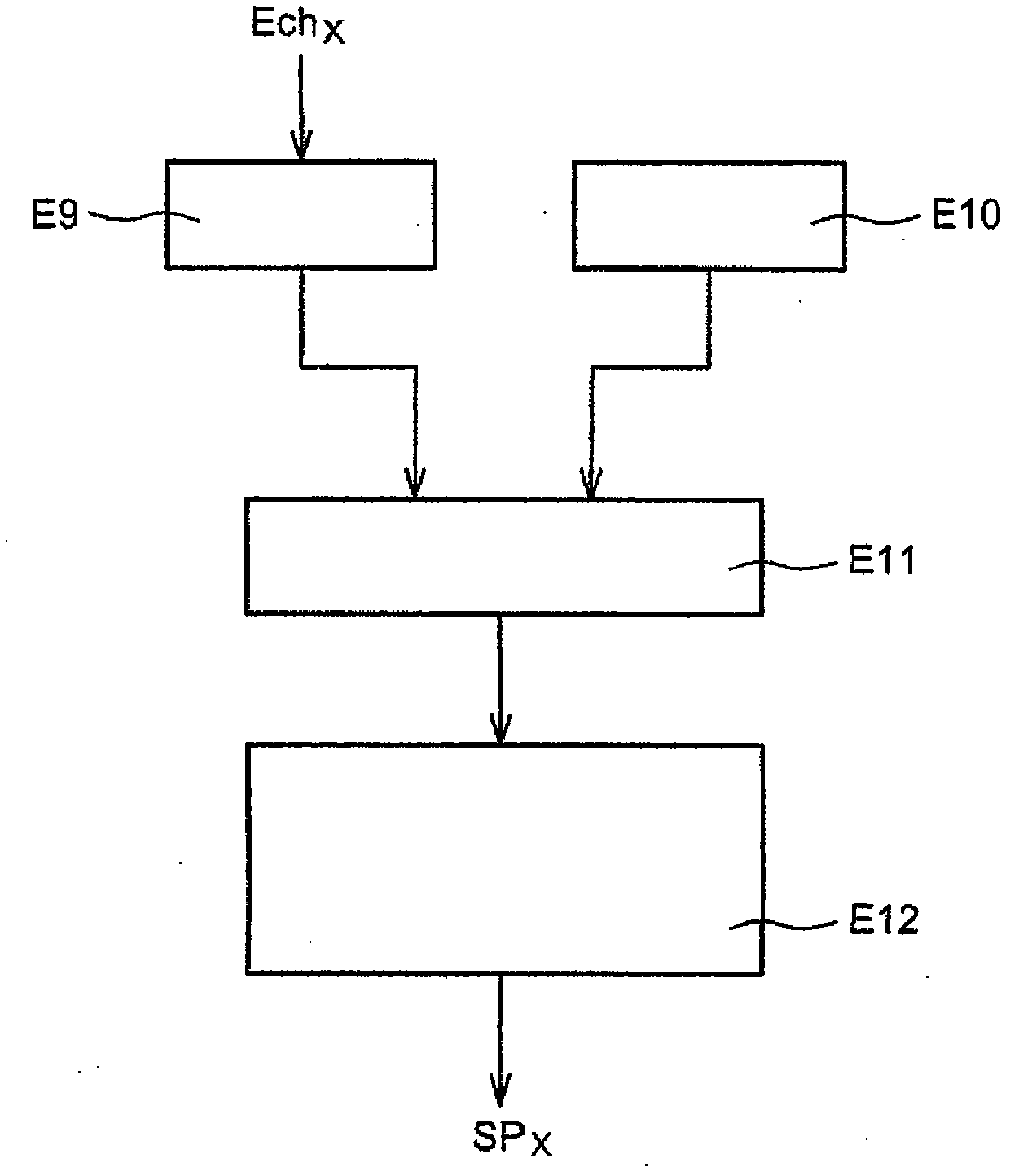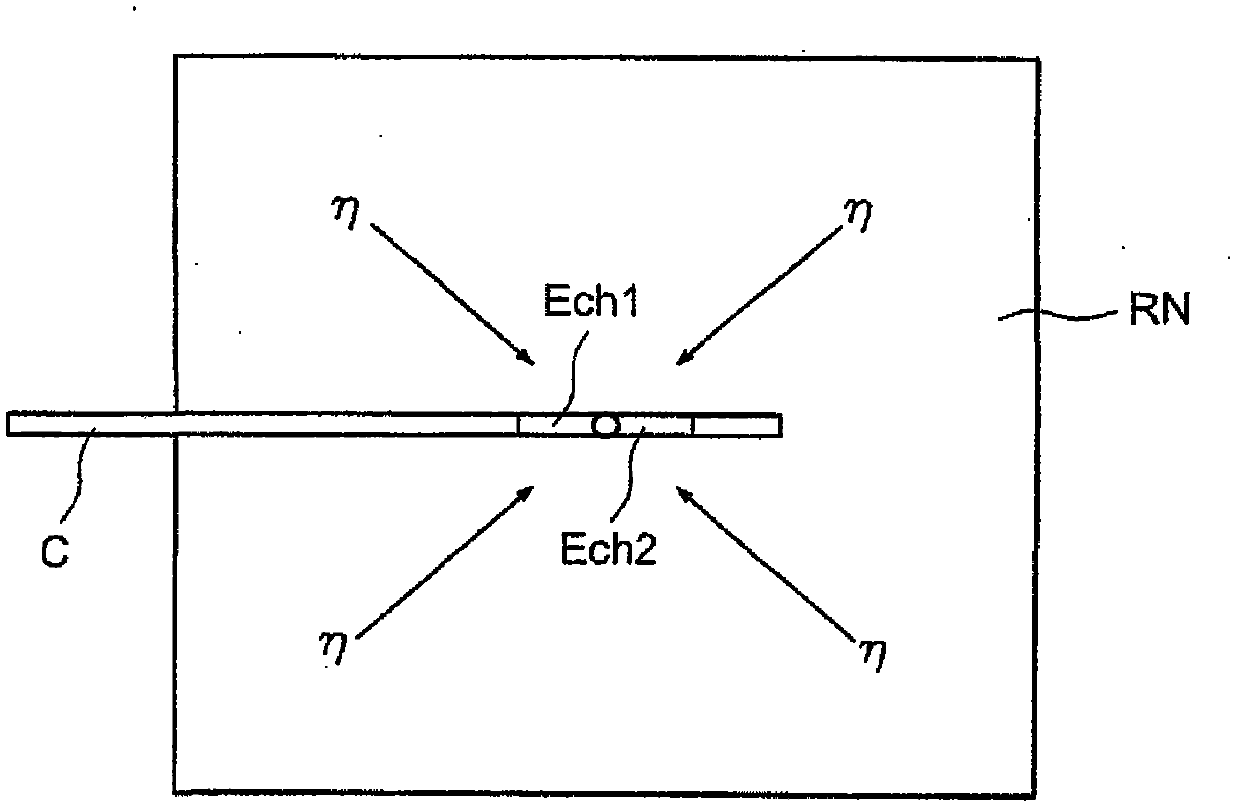Method for determining the emission intensity of gamma radiation from a radioelement
A radioactive element and gamma ray technology, applied in the field of measuring the gamma ray emission intensity of radioactive elements, can solve problems such as uncertainty of the restricted decay rate and short lifespan
- Summary
- Abstract
- Description
- Claims
- Application Information
AI Technical Summary
Problems solved by technology
Method used
Image
Examples
Embodiment Construction
[0034] figure 1 depicts a block diagram of the method for determining gamma ray intensity of the present invention, and figure 2 describe figure 1 A block diagram of a series of specific steps in the method of the present invention.
[0035] The method of the present invention comprises (see figure 1 ): step E1, the sample Ech 1 and a standard sample Ech 2 Installed into an oscillating rod, sample Ech 1 The gamma radiation intensity I(Ech 1 ) will be determined, while the standard sample Ech 2 The gamma radiation intensity I(Ech 2 ) is known; step E2, will be equipped with sample Ech 1 and Ech 2 The vibrating rod is installed in a nuclear reactor; step E3, for the sample Ech placed in the nuclear reactor 1 and Ech 2 performing the irradiation; step E4, removing the irradiated sample from the nuclear reactor; step E5, measuring the gamma ray net area of the irradiated sample (a measure of gamma ray area) and shaping this net area measurement to obtain A net area ...
PUM
 Login to View More
Login to View More Abstract
Description
Claims
Application Information
 Login to View More
Login to View More - R&D Engineer
- R&D Manager
- IP Professional
- Industry Leading Data Capabilities
- Powerful AI technology
- Patent DNA Extraction
Browse by: Latest US Patents, China's latest patents, Technical Efficacy Thesaurus, Application Domain, Technology Topic, Popular Technical Reports.
© 2024 PatSnap. All rights reserved.Legal|Privacy policy|Modern Slavery Act Transparency Statement|Sitemap|About US| Contact US: help@patsnap.com










